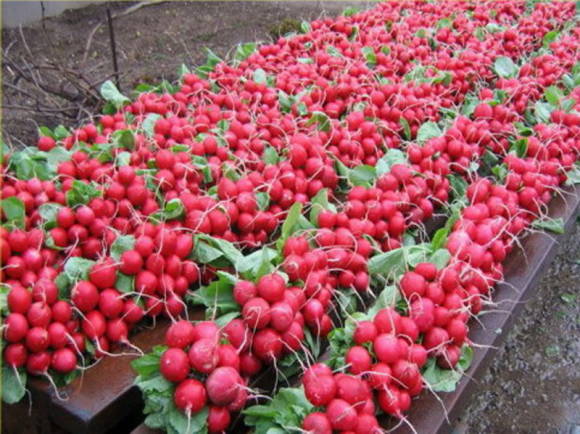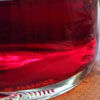
About useful types of rose hips and their cultivation - in the article Picking up the area with useful rose hips
Traditional and scientific medicine uses rose hips from top to root tips. Fruits are a high-vitamin remedy that increases the body's resistance to all kinds of diseases, strengthens the capillary walls, tonic, choleretic, prevents the development of sclerosis, stimulates the adrenal cortex and the function of the gonads. This is a kind of natural "Askorutin". Vitamin C - ascorbic acid - is involved in many redox processes in the body. Rosehip weakens the development of atherosclerosis. Vitamin P helps to reduce capillary fragility, improves the use of ascorbic acid by the body.
But on the other hand, this off-scale content of vitamin C is a factor limiting its use in gastric and duodenal ulcers and hyperacid gastritis. Compounding the matter is that when brewing, the fruits are usually recommended to crush. And this is correct, since in this case the extraction is better. But inside there are many hard hairs, which, getting into the stomach with a decoction, irritate the mucous membrane and aggravate undesirable processes. Therefore, before use, it is better to strain the infusion through a clean cloth or 2-3 layers of gauze. A large amount of ascorbic acid in a decoction, infusion or rosehip tea can destroy tooth enamel. In addition, due to the presence of ascorbic acid in the preparation, the absorption of antibiotics of the penicillin and tetracycline groups is enhanced, and the absorption of iron preparations also increases. After taking rose hips, rinse your mouth with clean water. Rosehip contains vitamin K, which has a hemostatic effect. Therefore, the simultaneous intake of rose hips and anticoagulants leads to a decrease in the effectiveness of the latter.
How to pick rose hips correctly

They are plucked before full maturity, when they are still hard but have a colored shell. Fruits touched by frost during thawing lose a significant part of their vitamins. The fruits are dried in the oven at a temperature of + 80 + 90 ° C, and as soon as possible after harvesting. This, again, contributes to the preservation of vitamin C. The fruits contain an enzyme that decomposes ascorbic acid. When heated, the enzyme is inactivated and vitamin C remains in its original form and in the maximum amount. Well-dried rose hips should retain their natural color and odor and not stick together when compressed into a ball. They are stored in a dry, dark place, at a temperature not higher than + 25 ° C, but also not falling below zero, no more than 2 years. The leaves are harvested during the summer, and the roots in the fall, and crushed immediately after harvest, otherwise it will be almost impossible to do this in a dry state.
How to use rose hips
Normal 0 false false false RU X-NONE X-NONE MicrosoftInternetExplorer4
Now a few words about how to cook it better. The fruits need to be crushed, and it is better not to do this for future use, but just before preparing the infusion or decoction. For a daily allowance, you will need about 20 g, that is, two full tablespoons. It is better to grind so that there is no contact with iron - a porcelain mortar, enameled dishes. It is desirable, after all, with a wooden pestle in porcelain or enameled dishes. How best to cook - phytotherapists argue. Therefore, it should be said about two methods, their pros and cons.

Let's start with infusion: Put 20 g of chopped rose hips in a thermos, pour 500 ml of boiling water, and let it brew for 6-8 hours. This is usually done in the evening, in order to get to a fresh source of vitamins in the morning. After such a long infusion, it is good to squeeze through several layers of gauze, and drink the infusion during the day for 2-3 doses (before meals, if there are no contraindications).It is used to increase the body's defenses, to improve performance, with pain in the joints, as an anti-inflammatory tonic, choleretic and diuretic.
The second method is less time-consuming to prepare, but more troublesome. However, it is believed that it allows you to store more vitamin C than with prolonged infusion. Pour boiling water over the chopped fruits, boil over low heat for no more than 15 minutes, then wrap them in a blanket or cover with a pillow for 15-30 minutes. Then take it as recommended in the previous recipe. But taking these funds for more than a month is not recommended.
You can improve the taste and reduce side effects by diluting the broth and rosehip infusion with compotes, fruit drinks or juices.
Rosehip seed oil is not inferior in efficiency to sea buckthorn oil. It is obtained from seeds by cold pressing (less often), or by low-temperature extraction (more often) with organic solvents. It is a yellow or orange liquid. The absence of elevated temperatures allows you to keep intact and safe mono- and polyunsaturated fatty acids, in particular linoleic (56.7%) and linolenic (9.4%) acids, as well as vitamin E (47 mg of α- and β-tocopherols). It is of cosmetic importance. Recommended for aging, fading, and most importantly dry skin. For oily, it can lead, on the contrary, to a negative effect, increasing the formation of acne. At home, it can be added to a regular cream, especially a night cream. Or you can use it to prepare a home remedy for rejuvenating aging dry skin by adding the appropriate essential oils.
From the pulp of the fruit is prepared oil extract of carotenoids – carotene, which is used for trophic ulcers, eczema, erythroderma. The use of rosehip oil extract accelerates wound healing and prevents the appearance of scars and scars (hyperchromic, keloid, hypertrophic, etc.), which has been confirmed by serious clinical trials. There have also been attempts to use rosehip oil to treat such difficult-to-treat diseases as psoriasis, eczema, neurodermatitis. In addition, it can be used similarly to sea buckthorn oil for nonspecific ulcerative colitis, skin cracks, including nipple cracks in nursing mothers, for stomatitis and gingivitis.
And in the fall, to maintain a frail body, mix in equal shares the dry fruits of mountain ash and rose hips and brew daily at the rate of 1 tbsp. spoon for 1-2 cups of boiling water. This vitamin drink has a truly remarkable effect. Just remember that in case of stomach diseases, especially against a background of high acidity, you need to drink it after meals.

Syrup from condensed water extract of fruits and sugar, holosas, is used as a choleretic for cholecystitis and hepatitis. Basically, low-vitamin dog rose hips are used for this purpose.
Fruit seed decoction in German folk medicine they are used for kidney stones. And it is the dog rose that is the pharmacopoeial species in Germany.
Milk infusion of a mixture of flowers, fruits and leaves in equal shares - a tonic for a breakdown.
Infusion of leaves in folk medicine is used as an antimicrobial and analgesic agent for diseases of the gastrointestinal tract. A decoction or infusion of roots is a wonderful remedy for cholelithiasis, not only contributing to the removal of stones, but also preventing their further formation. Besides, this medicine is by no means nasty. The broth has a rich reddish color and a very pleasant taste. The course of treatment is from one month or more.







